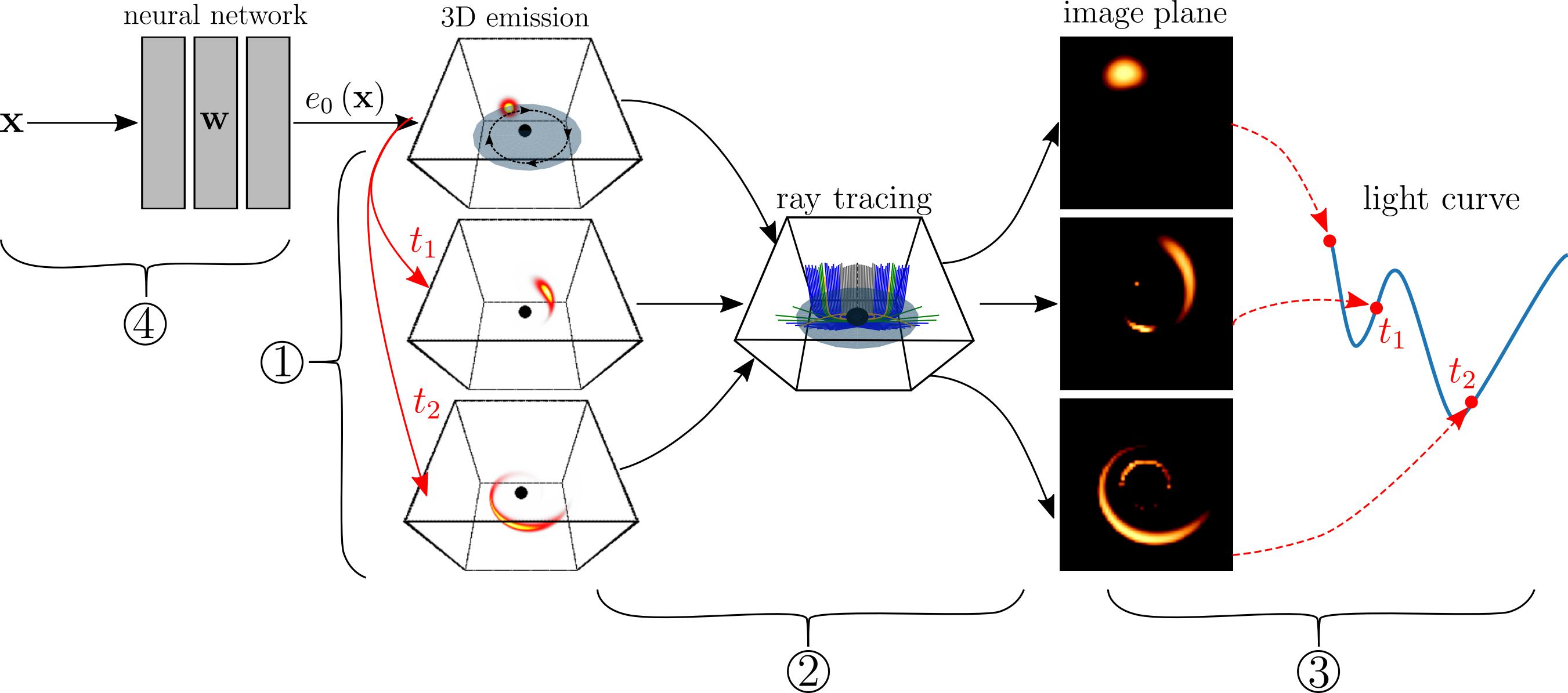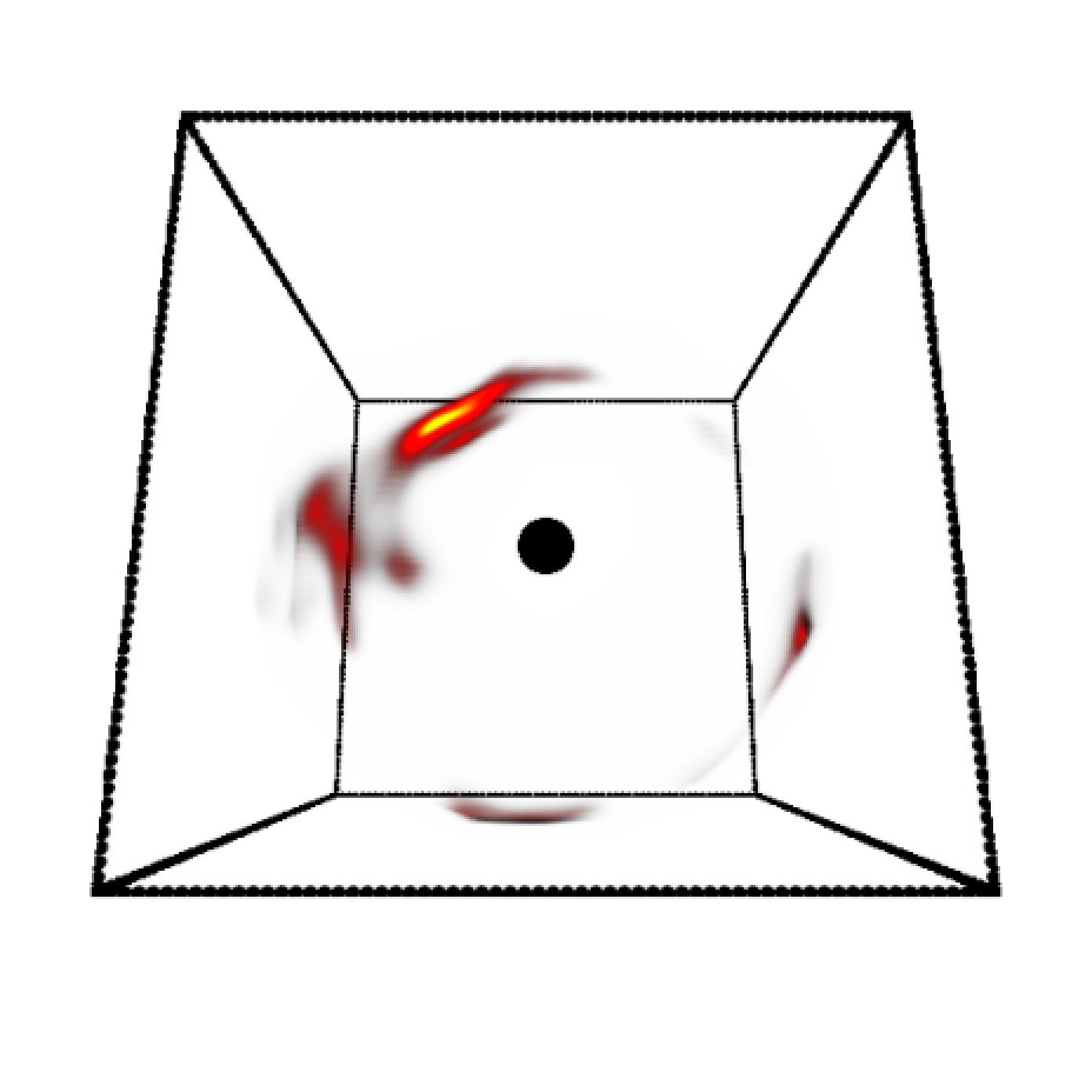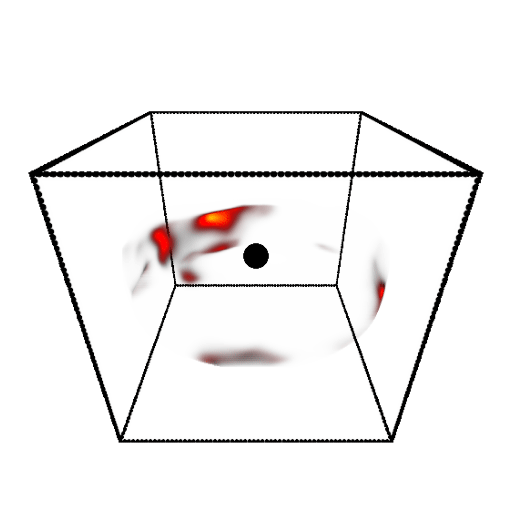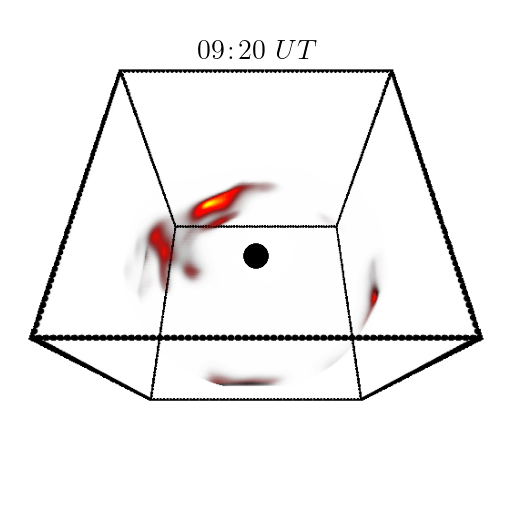Maciek Wielgus3 Pratul P. Srinivasan4
1California Institute of Technology 2Princeton 3Max-Planck-Institut für Radioastronomie 4Google DeepMind

To reconstruct the 3D strcuture around a black hole, we developed a new computational tool which we call: Orbital Polarimetric Tomography. Orbital tomography relies on constraining a neural representation ("Neural Radiance Field") with general relativistic ray tracing. This figure gives an overview of the main computational components: 1. An orbital model propagates an initial emission volume (e0) in time. 2. Ray tracing: we compute General Relativistic ray paths according to the black hole parameters (spin, mass, inclination) and numerically integrate the 3D emissivities to synthesize image plane frames. 3. Each frame is summed to produce a single light curve data point which downstream is compared to the observations. 4. A neural representation captures the underlying 3D volume as a continuous function.
Abstract
The interaction between the supermassive black hole at the center of the Milky Way, Sagittarius A∗, and its accretion disk occasionally produces high-energy flares seen in X-ray, infrared, and radio. One proposed mechanism that produces flares is the formation of compact, bright regions that appear within the accretion disk and close to the event horizon. Understanding these flares provides a window into accretion processes. Although sophisticated simulations predict the formation of these flares, their structure has yet to be recovered by observations. Here we show the first three-dimensional (3D) reconstruction of an emission flare recovered from ALMA light curves observed on April 11, 2017. Our recovery shows compact, bright regions at a distance of roughly six times the event horizon. Moreover, it suggests a clockwise rotation in a low-inclination orbital plane, consistent with prior studies by GRAVITY and EHT. To recover this emission structure, we solve an ill-posed tomography problem by integrating a neural 3D representation with a gravitational model for black holes. Although the recovery is subject to, and sometimes sensitive to, the model assumptions, under physically motivated choices, our results are stable, and our approach is successful on simulated data.
paper [pdf] code [Github] DOI: 10.1038/s41550-024-02238-3
Citation
Visualizations
The visualization below illustrate the recovery results:
a) The recovered 3D structure visualized from the estimated Earth view (12 degree inclination).
a) The recovered 3D structure is fixed in time, with the view rotating to help visualize the structure from all angles.
b) The recovered 3D structure at a fixed view angle as the orbital model evolves over a span of ~100 minutes


